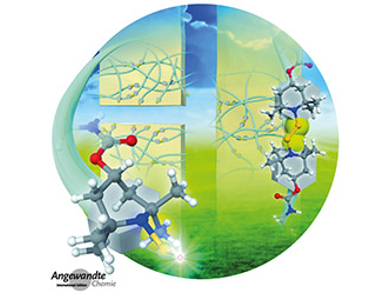In this issue, C. Mao et al. review probes and therapeutics in precision, phage-enabled nanomedicine. How can they be engineered to target particular cells or tissues? R. Kumar and C. Nevado discuss cyclometalated gold(III) complexes in a further Review. What are the developments in this field with respect to catalysis, (bio)inorganic chemistry, ligand design, and materials science? The Highlight deals with remote C–H bond functionalization by photocatalysis (W.-J. Xiao et al.). In an Editorial, C. M. Niemeyer explains how chemistry enables collaboration between engineering and life sciences.
In the Communications section, H. Otsuka et al. present thermally adjustable dynamic disulfide linkages mediated by highly air-stable radicals (see picture). L. Wesemann et al. succeeded in the reductive dehydrogenation of a stannane through multiple Sn–H activation by frustrated Lewis pairs. F. Würthner et al. observed a columnar liquid crystal formed by hydrogen-bonded perylene bisimide J-aggregates. S. Saxena et al. show how to measure distances in DNA by pulsed ESR spectroscopy independent of nucleotides.
- Angewandte Chemie 8/2017: Activate!,
Angew. Chem. Int. Ed. 2017, 56 (8).



